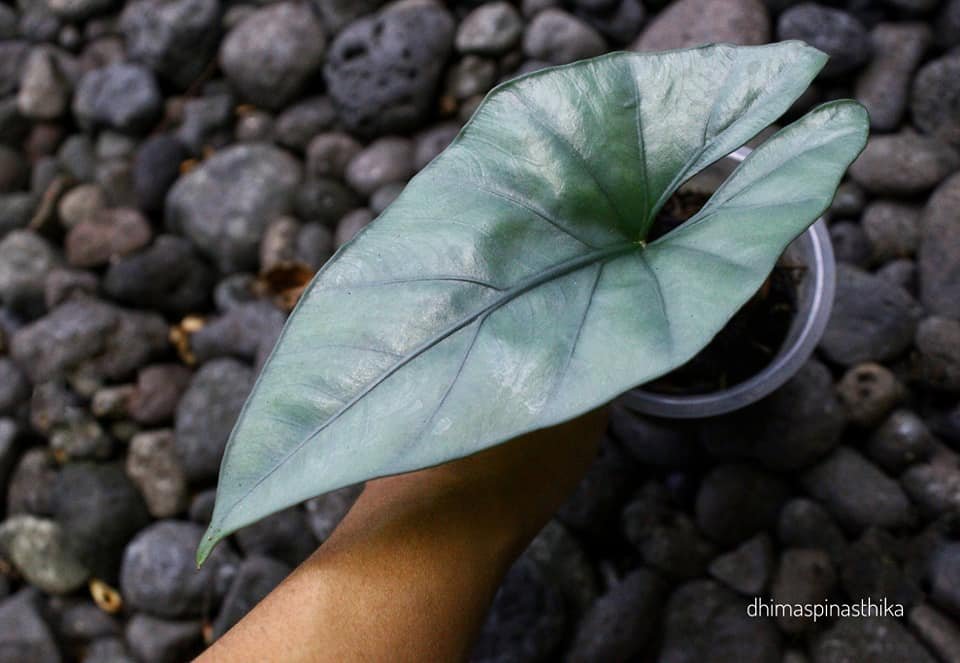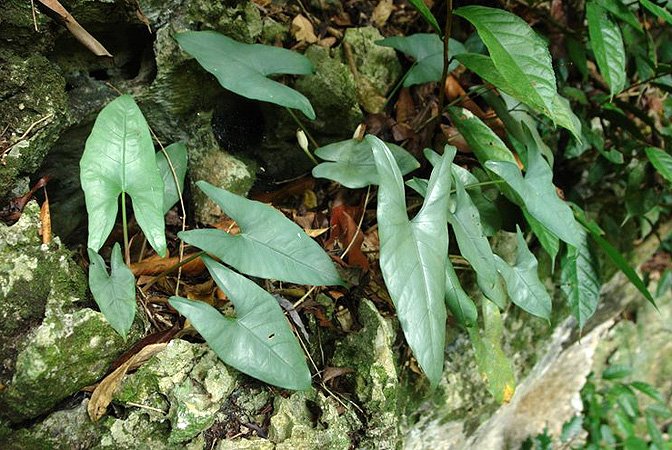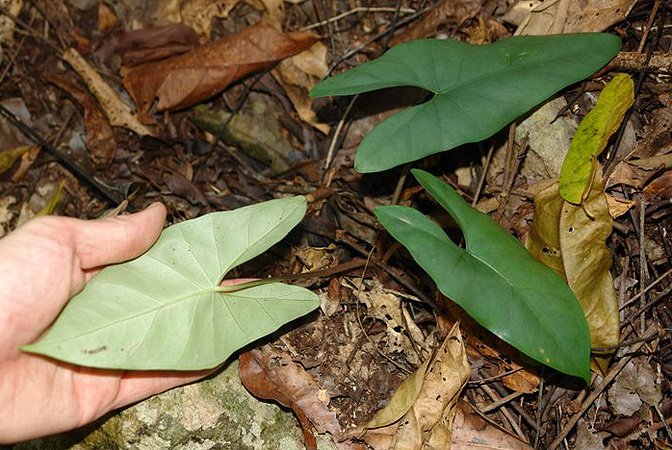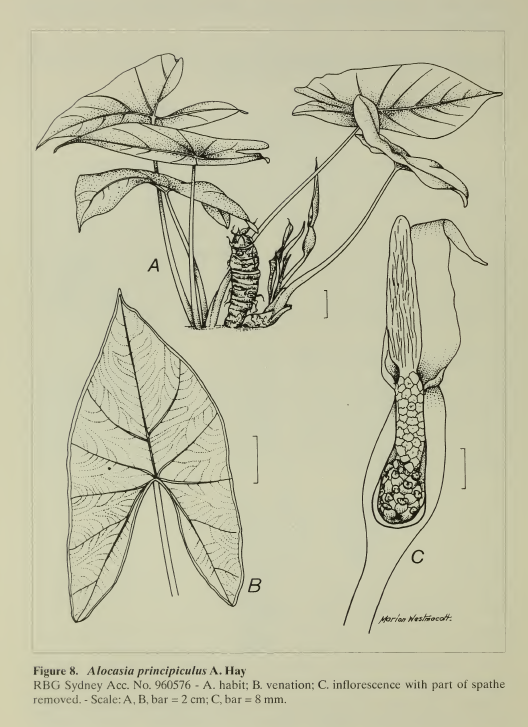ALOCASIA PRINCIPICULUS
ORIGINAL DESCRIPTION:
Ah Alocasia princeps W. Bull stature valde minore, habitu calcicola lihthophytica, pedunculo longo, inflorescentia mascula haud exserta differt.
TYPUS: Cult. Royal Botanic Gardens Sydney Acc. No. 960576 ex Malaysia, Sabah, Kinabatangan Distr., Gomantong Caves, originally collected 24 Apr 1996, Hay et al 12162 (NSW, holo; iso, K, L, KEP, SAN, SING - to be distributed).
Photo by Dhimas
SYNONYMS: N/A
DISTRIBUTION: Endemic to Borneo, Sabah, and East Kalimantan
CLIMATE: Tropical humid climate
Humidity is moderate throughout the year, ranging from 60% to 70%
Temperature is varies between the seasons - within the range of 48°F/9°C to 88°F/31°C during the day. Minimum temperatures never dip below 45°F/7°C
Rainy and humid season (October to May) and a dry season between June and October. The average annual rainfall is 1,200 mm
ECOLOGY: Lowland rain forest, on and among hmestone boulders; sea level to 600 m altitude.
SPECIES DESCRIPTION:
Small more or less lithophytic herb; rhizome ca. 1.5-2 cm diam.; leaves several together; petioles ca. 20-30 cm long, sheathing in the lower 1/7-V6, grey-green to dark purple-brown, becoming paler distally, somewhat spreading, smooth; blade ca. 20(-25) cm long, hastato-sagittate, narrowly triangular in outhne, occasionally somewhat ovato-sagittate, sometimes some subadult leaves peltate, dull to slightly glossy, distinctly grey-green above, paler below, very thinly leathery; anterior lobe ca. 9-14 cm long, widest at base; anterior costa with 2(-3) primary lateral veins on each side, diverging at ca. 45-60°; secondary venation flush with the lamina, forming poorly defined interprimary collective veins towards the margin; axillary glands inconspicuous; posterior lobes ca. 2/3 the length or subequalling the anterior, the inner sides lanceolate; posterior costae diverging at ca. 60-90°
INFLORESCENCE:
Inflorescences mostly 2 together (1-4); peduncles much extended from the cataphylls, ca. V3-2/3 the length of the petioles; cataphylls lanceolate, ca. 7 cm long; spathe ca. 6-7 cm long; lower spathe ovoid, ivory to yellowish ivory, ca. 2 cm long; limb lanceolate, pale green faintly suffused brown; spadix ca. 5 cm long; female zone ca. 1 cm long; pistils not or hardly touching one another, pale green; ovaries ovoid, ca. 1.5 mm diam., facing diagonally up, pale greenish yellow; style short, ca. 1 mm; stigma white, bilobed; interstice ca. 4 mm long, attenuate, 2-3 whorls of loosely arranged synandrodia (sometimes partly naked); male zone ca. 8 mm to 1 cm long, pale ivory, completely within the lower spathe chamber; appendix ivory, ca. 2.5-3.5 cm long, 4 mm diam., slightly constricted at junction with male zone corresponding to spathe constriction; fruiting peduncle subequalling petioles
VARIEGATED FORMS: N/A
ETYMOLOGY: The substantive epithet, meaning 'little prince', is the diminutive of princeps, alluding to the small stature and relationship of this species
NOTES:
Alocasia principiculus differs from other members of the A. princeps complex in its small overall size, grey-green, thinly leathery leaves, relatively long peduncles and in the male zone being held entirely within the lower spathe chamber.
Other specimens seen: SABAH: Sandakan Forest District, Elopura, Gomantong, Cuadra A1489 (BO, BRI, K, KEP, L, SING); 20 mi S of Sandakan, Gomantong Caves Hill, Wood A4602a (L). KALIMANTAN: East Kalimantan, Berouw, Mt Bungaan, Kostermans 13781 (L).
CULTIVARS: N/A
HYBRIDS: N/A










